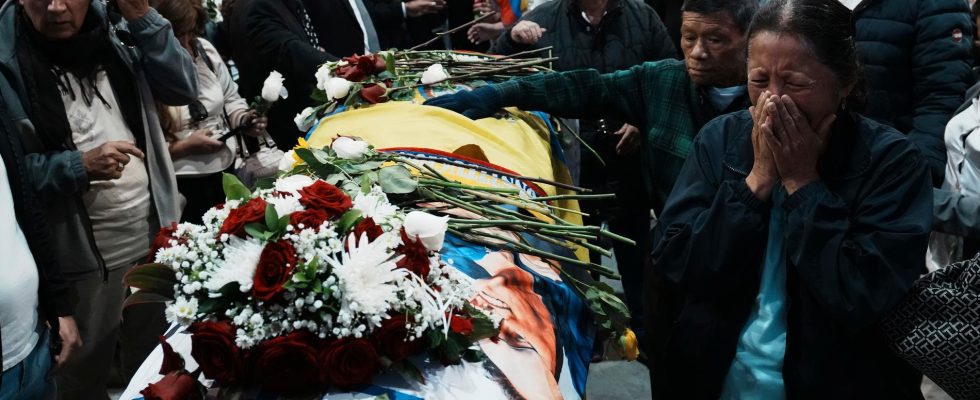full screen
Next
Mourners at a funeral ceremony for murdered presidential candidate Fernando Villavicencio in Ecuador’s capital Quito on Friday.
1 / 2Photo: Dolores Ochoa/AP/TT
He promised to fight corruption and cartels. It is believed to have cost him his life.
The murder of presidential candidate Fernando Villavicencio in Ecuador has echoes of 1980s Colombia.
– You remember what happened to Luis Carlos Galán?
In a chilling interview last Sunday, Villavicencio was reminded of the 1989 murder of anti-corruption politician Galán in a Colombia then paralyzed by cartel violence.
– The people of this country need honest and courageous leadership, said Villavicencio.
– You can lose your life the way you act, insisted the journalist, and was met by a calm but firm answer:
– You survive by losing your fear.
A few days later, on August 9, Villavicencio was shot dead after a campaign rally in the capital, Quito.
State of emergency
Earlier that day, the presidential candidate had promised a clean-up within the judicial system to get rid of the policemen who are bought by the mafia. The promise was one in a series of proposals by Villavicencio to tackle corruption and the drug cartels that have in recent years tightened their grip on Ecuador.
The election, on August 20, was close and Villavicencio had just climbed to second place in the polls.
President Guillermo Lasso has singled out “organized crime” as responsible for the murder and has declared a state of emergency.
– We are now similar to Colombia in the 80s and 90s, says Pedro Donoso, political scientist and director of the consulting firm Icare, to the BBC.
Wave of murders
Ecuador has been hit by a wave of murders of politicians, judges and prosecutors. Residents have been forced to get used to reports of corpses left hanging from bridges and violent kidnappings.
Last year, the homicide rate rose dramatically to 26 murders per 100,000 inhabitants – more than four times higher than in 2018.
More and more representatives of the judiciary are suspected of being bribed, and the country’s prisons have become the scene of violent confrontations between the gangs.
Experts give several explanations for the development. One is that efforts against the cartels in Mexico and Colombia caused them to move part of their operations to Ecuador.
They have been attracted there by the smuggling opportunities via the country’s ports, with a long tradition of trade with Europe and North America. The export is said to be facilitated by a lack of border controls, widespread corruption and poorly prepared authorities.
Changed market
Ecuador is now estimated to be one of the world’s largest transit countries for drugs. Cocaine production still takes place mainly in the neighboring countries of Colombia and Peru.
– It has become more profitable for drug traffickers to export through (the Ecuadorian port city of) Guayaquil than through Colombia’s Pacific region, Elizabeth Dickinson of the International Crisis Group think tank told the BBC.
Much has changed since the 1980s and 1990s when single large cartels dominated the market and controlled most stages from production to trade. Today, the market is both more fragmented and globalized. Both Mexican cartels and European drug trafficking networks are believed to be in place in Ecuador.
The arrests of leading criminals have so far only exacerbated the problems by making the cartels more violent. So says Luis Cordova Alarcon, conflict researcher at the Universidad Central in Ecuador – who paints a dark picture.
– Organized crime is already taking over the state, he tells the AFP news agency.
